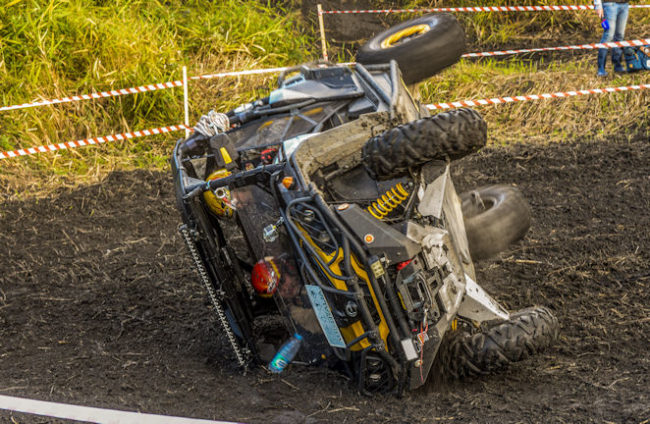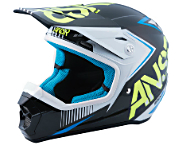© 2019 by Bill Uhl, ATV Expert Witness

ATV and UTV manufacturers say ATVs and UTVs are not toys and can be hazardous to operate. Manufacturers issue warnings like: These vehicles handle differently than other vehicles, such as motorcycles and cars. A collision or rollover can occur quickly, even during routine maneuvers like turning or driving on hills or over obstacles if an operator fails to take proper precautions. Manufacturers provide cautions in owner’s / operator’s manuals. They state that operators cannot rely on what the individual thinks they know about ATVs and UTVs from their past experience driving cars, trucks or even off-road motorcycles. Manufacturer warnings include:
- Read your owner’s manual. Understand all safety warnings, precautions and operating procedures before operating this off-highway vehicle (OHV). Keep the manual with the vehicle.
- Never operate an OHV without proper instruction. Take a training course.
- Never permit a guest to operate the OHV unless the guest has read the owner’s manual, all product safety labels and has completed a certified safety-training course.
MORE ABOUT POTENTIAL DANGERS
Why do manufacturers tell readers in the introductory section of most owner’s / operator’s manuals that training is essential to prevent accidents, injuries and even death?
- ATVs and UTVs possess dangers that are not obvious or apparent to the novice operator.
- ATVs and UTVs operate differently than other vehicles, specific knowledge, training and skill development are vital.
- An ATV / UTV trainer must be a qualified, seasoned instructor, not someone who simply shares their own bad habits or lack of accurate knowledge with a novice.
When you buy a new ATV / quad / 4-wheeler, free training for your entire family will be part of the purchase price. Of course, if children are too young to legally ride the vehicle you purchase, their training will not be included. Even though you do not receive free training when you purchase a UTV / side by side / utility vehicle, you’ll notice in the owner’s / operator’s manual that the manufacturer recommends training. Operating an ATV or UTV without receiving safety training will significantly increase your risk of accidents, injuries or ever death. It’s also important to heed the warning to gain proper training so you avoid damaging someone else’s property or causing them to be hurt.
OTHER REASONS SAFETY TRAINING IS ABSOLUTELY ESSENTIAL
ATV and UTV operators must understand how to operate their vehicles properly in a variety of situations appropriate to the types of use they’ll engage in. This includes diverse weather conditions, a wide variety of terrains and an understanding of how to navigate if other operators will be operating in the area, especially if these individuals will be in close proximity. Quite simply, you need to know the “rules of the trail”, plus specific information regarding how to prevent accidents and injuries. Examples: What if someone else’s vehicle veers out of control? Will construction be taking place near the area where the ATV or UTV operator will be using their vehicle? Hikers? Horses? Deer? Elk? Motorcycles? Etc. Manufacturers emphasize that beginning and inexperienced operators should complete the recommended safety training before operating an ATV or UTV. Manufacturers also state warnings, such as “Never permit a guest to operate the vehicle unless the guest has read the owner’s manual and all product safety labels and has completed a certified safety training course.” The bottom line: Manufacturers issue warnings. E.g., “the vehicles are very different from each other and from other types of vehicles.” This is why it is so critical that you avoid accidents, injuries (and even death) by gaining appropriate training.
YOU DON’T KNOW WHAT YOU DON’T KNOW
Did you know that some UTV / side by side vehicle manufacturers state that the cab frame, “commonly seen and known as a roll cage / rollover protective structure” is not designed or intended to provide rollover protection? This can be vitally important to you because there is a common misunderstanding / illusion that the cab frame will provide safety protection during a rollover. Manufacturers warn operators to always wear their seat belts for maximum protection and keep hands and feet in the vehicle at all times. This is quite puzzling because manufacturers are aware that this is impossible to do during a vehicle rollover. Why? Because the forces created by the rollover are too strong for a person to always hold onto anything within the cab frame.
SHORTEN YOUR LEARNING CURVE As an Expert Witness and Senior Instructor for the off-road riding school, OHVtraining.org, I can tell you that learning from the mistakes and successes of others is much safer and faster than the trial-and-error method. A qualified instructor can significantly shorten your learning curve. A qualified off-road vehicle safety trainer helps the untrained operator clearly see what is not obvious or apparent and yet is so essential to avoid incidents, accidents and injuries. After your basic ATV or UTV training, you’ll need to practice the new skills you’re developing and gain feedback from a skilled observer so you can become efficient. This should be an integral part of your training because our brains require hands-on practice designed to integrate new knowledge and skills.
CONFIDENCE AND PROFICIENCY EMERGE FROM PRACTICE AND INTEGRATION
Eventually, you’ll graduate to the step of practicing on your own with or without an observer providing feedback. Avoid being injured because you are over-confident. Always select a safe area where you can practice, whether or not someone is observing you and providing feedback. Motor skill development requires time operating the vehicle, not just written information and mental knowledge. Your goal is to ride safely and enjoy your ATV or UTV recreation / work tool as you become more and more efficient with your new physical skill. Most owner’s / operator’s manuals include an “operations” section. This includes many things you need to know such as how to ensure your vehicle’s tire pressure is appropriate to ensure your safety. Click here to learn more about tire pressure and how it affects your safety. The operations section will also discuss how to safely operate your ATV or UTV on different types of terrain and a variety of weather and other conditions.
OTHER IMPORTANT SAFETY CONSIDERATIONS
Another critical safety factor you need to understand involves over-steering of ROVs (recreational off-road vehicles) because over-steering is also related to accidents and injuries. Click here to learn more about over-steering because gaining this knowledge can dramatically affect your ability to stay safe. Although the training in the manuals is very basic, the manufacturers have taken steps to provide ATV and UTV operators a beginning frame of reference. Even if you master everything in the owner’s / operator’s manual, if you are an inexperienced operator, you will still be operating the ATV / UTV at a very basic level. You’ll need to gradually expand your skills before using your vehicle in more challenging situation and conditions.
NOTE: This article is not intended to be all inclusive. It is designed to provide a foundation for the reader to learn from.
Bill Uhl is a Safety Trainer and Court-Qualified Expert Witness for cases involving all-terrain vehicles (ATVs), utility vehicles (UTVs / side by sides), ROVs, snowmobiles, motorcycle dirt bikes, dual sport bikes and off-road bicycles. Uhl has completed over 75 cases while serving as an Expert Witness, including trial testimony. Click here now for more information.


